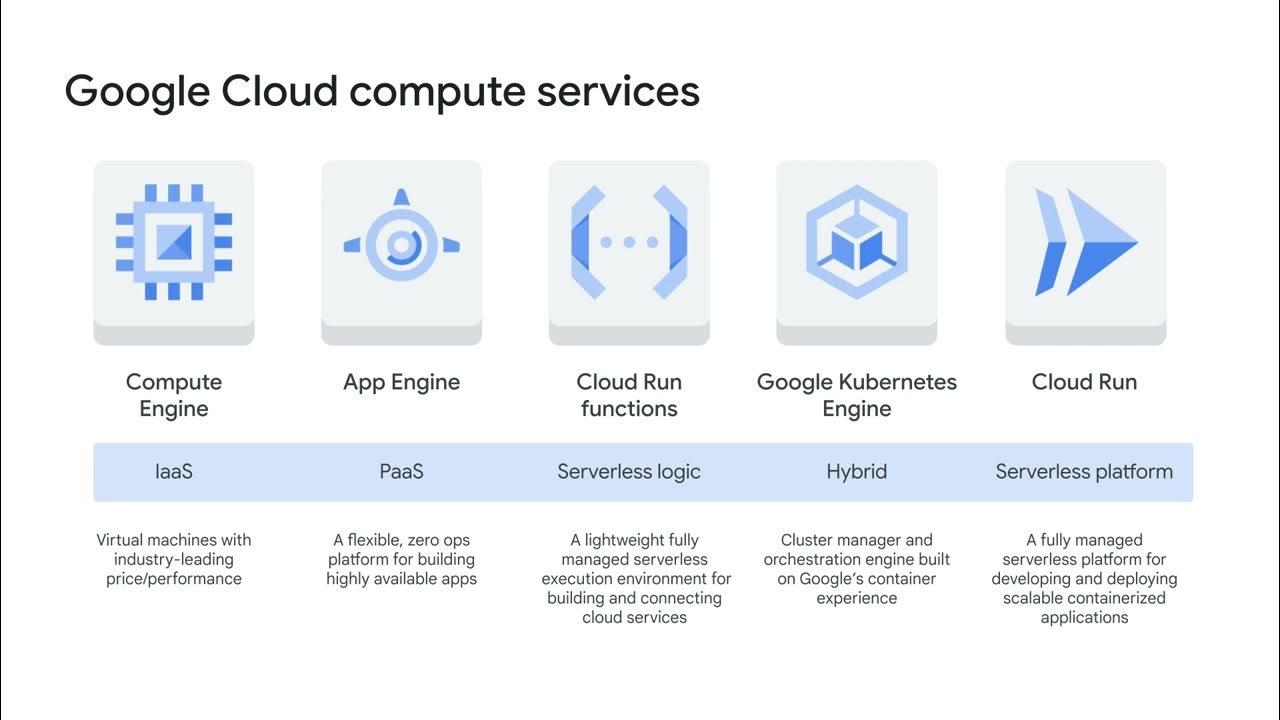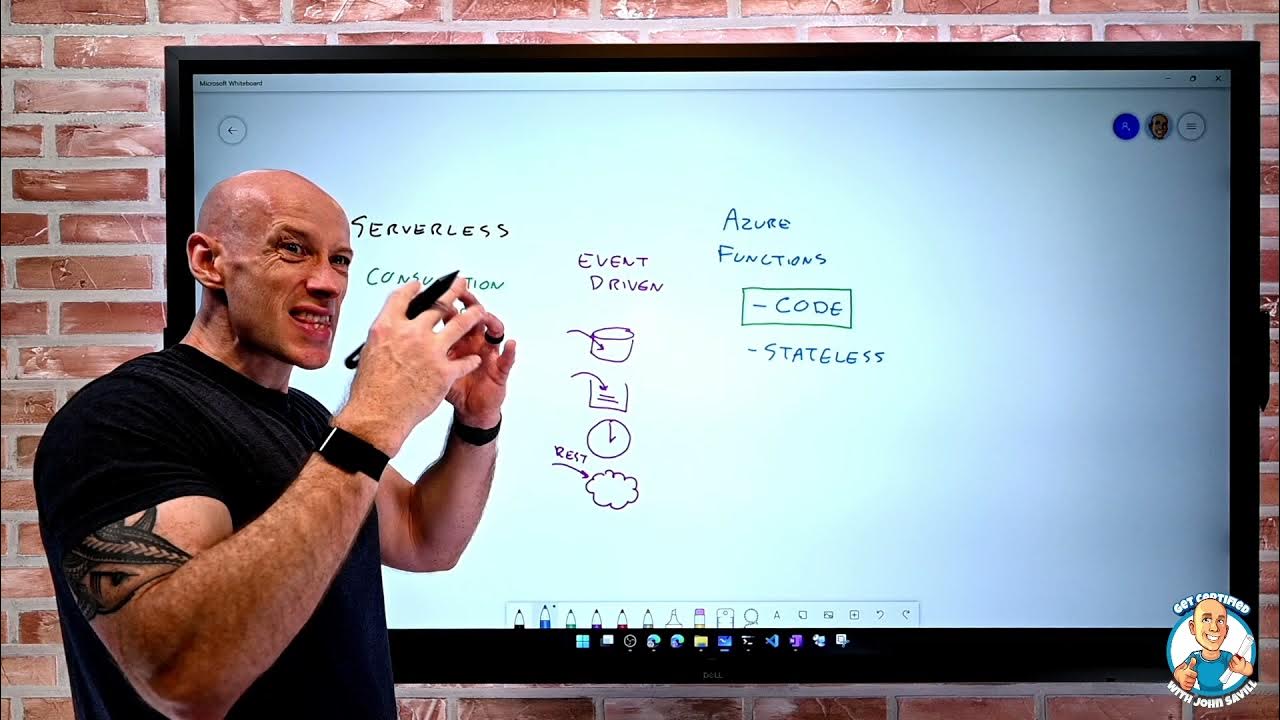Managed serverless computing with Cloud Run
Summary
TLDRCloud Run is a serverless compute platform that allows developers to run stateless containers in response to web requests or Pub/Sub events. Built on Knative, it removes the need for infrastructure management, letting developers focus on application development. With auto-scaling, fast response times, and cost-efficiency, Cloud Run offers a flexible container-based or source-based workflow for deploying applications. It handles HTTPS encryption and SSL certificates, ensuring secure connections. Cloud Run’s unique pricing model charges only for actual usage, making it cost-effective for dynamic workloads, with support for a wide range of programming languages and runtime environments.
Takeaways
- 😀 Cloud Run is a managed serverless compute platform for running stateless containers triggered by web requests or Pub/Sub events.
- 😀 Cloud Run removes infrastructure management tasks, allowing developers to focus on building applications.
- 😀 It is built on Knative, providing portability across different environments and platforms.
- 😀 Cloud Run automatically scales containers up or down from zero, based on demand, and charges only for the resources used.
- 😀 The pricing model is granular, calculated down to the nearest 100 milliseconds, ensuring cost-efficiency.
- 😀 Cloud Run follows a straightforward three-step developer workflow: write the app, build the container image, and deploy it.
- 😀 Developers can choose between container-based or source-based workflows for deployment in Cloud Run.
- 😀 The source-based approach allows Cloud Run to build and package the application into a container image using Buildpacks.
- 😀 Cloud Run handles SSL encryption and HTTPS serving, exposing applications on a subdomain or a custom domain.
- 😀 The pricing is based on the resources consumed, with small fees for requests served, and the price increases with more CPU and memory allocation.
- 😀 Cloud Run supports a wide range of languages, from popular ones like Java, Python, and Node.js to less common ones like COBOL, Haskell, and Perl.
Q & A
What is Cloud Run?
-Cloud Run is a managed compute platform that allows you to run stateless containers triggered by web requests or Pub/Sub events. It is a serverless platform that handles infrastructure management, enabling developers to focus on application development.
What does it mean that Cloud Run is serverless?
-Being serverless means that Cloud Run eliminates the need for developers to manage infrastructure. Developers only focus on writing code and deploying containers, while Cloud Run automatically scales and manages the underlying servers.
How does Cloud Run scale applications?
-Cloud Run scales automatically, meaning it can increase or decrease the number of containers running based on the number of incoming requests. It can scale up from zero and back down instantly, ensuring efficient resource usage.
What are the benefits of Cloud Run’s pricing model?
-Cloud Run's pricing model is based on the resources used while a container handles requests, with granularity down to 100 milliseconds. This means you only pay for active usage, and there's no cost when the container is idle. Additionally, there's a small fee for every 1 million requests served.
Can I deploy source code directly to Cloud Run?
-Yes, Cloud Run supports a source-based workflow where you can deploy your source code directly instead of a pre-built container image. Cloud Run will build the container image for you using Buildpacks, an open-source project.
What programming languages are supported by Cloud Run?
-Cloud Run supports a variety of programming languages, including popular ones like Java, Python, Node.js, PHP, Go, and C++. It also supports less common languages such as COBOL, Haskell, and Perl, as long as the application can handle web requests.
How does Cloud Run handle HTTPS and security for my application?
-Cloud Run handles HTTPS serving by automatically generating SSL certificates and configuring SSL termination. Your application is secured with encryption without requiring manual setup from the developer.
What is the maximum resource allocation available on Cloud Run?
-Cloud Run can allocate up to four vCPUs and eight gigabytes of memory for each container instance. The resources you allocate affect the pricing, with more vCPUs and memory increasing the cost.
What is the significance of the 'Knative' technology in Cloud Run?
-Knative is an open-source project based on Kubernetes that serves as the foundation for Cloud Run. It provides an API and runtime environment, offering flexibility to move workloads across different platforms and environments.
What makes Cloud Run different from other compute products like Compute Engine?
-Unlike Compute Engine, which charges for server uptime regardless of usage, Cloud Run only charges for active usage while a container is processing requests. This model ensures that you only pay for the resources you use, avoiding the cost of idle server capacity.
Outlines

هذا القسم متوفر فقط للمشتركين. يرجى الترقية للوصول إلى هذه الميزة.
قم بالترقية الآنMindmap

هذا القسم متوفر فقط للمشتركين. يرجى الترقية للوصول إلى هذه الميزة.
قم بالترقية الآنKeywords

هذا القسم متوفر فقط للمشتركين. يرجى الترقية للوصول إلى هذه الميزة.
قم بالترقية الآنHighlights

هذا القسم متوفر فقط للمشتركين. يرجى الترقية للوصول إلى هذه الميزة.
قم بالترقية الآنTranscripts

هذا القسم متوفر فقط للمشتركين. يرجى الترقية للوصول إلى هذه الميزة.
قم بالترقية الآن5.0 / 5 (0 votes)






